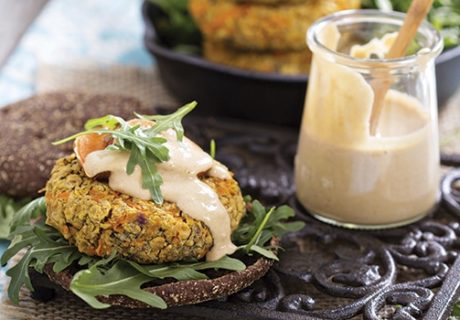There is no doubt that superfoods are here to stay, but what are the issues affecting the sector and what does the future hold for this burgeoning category?
Superfoods are infiltrating every food and beauty category and have become incorporated in so many products – from nail varnish with kale extract to dog food with cranberries and blueberries – and had so much media coverage that it is impossible to ignore their increasing presence. In fact, research from YouGov reveals that 61% of people in the UK have bought a food due to its superfood label.
Mintel reports that snacks were the most common category in this sector by 2013, replacing juices. The baby food category has also grown from less than 2% of food and drink launches with a superfood descriptor in 2010 to 6% in 2013, and the use of the term in breakfast cereals has also grown. Mintel found that berry fruits accounted for 32% of superfood launches between September 2013 to August 2014, but that nuts, vegetables and seeds are on the rise.
“Superfoods are really increasing in popularity,” says Katie Clare, PR & marketing manager at inSpiral Visionary Products. “Why take an artificial vitamin C tablet when you can get vitamin C in abundance from dried natural powders like acerola and acai?”
Martin Kemp, MD of superfood importer and distributor Supernutrients, says: “There is a general sustained and comprehensive movement towards healthy eating, and superfoods are a part of this. Superfoods are very much in the eye of the health storm if you like.”
“Superfood is the fastest growing section within health food retail – that’s what our customers are telling us,” adds Andrew Hunt, co-founder and MD of Aduna, which specializes in baobab and moringa powders. “We’ve seen the first superfoods in UK grocery retail, – Bioglan in Sainsbury’s. It’s advertising on prime time TV which shows you the immense growth and growth potential within the superfood market.”
The terms superfood, super nutrient and super fruit are bandied about left, right and centre, but there is no legal definition of these terms. So what defines a superfood? Hunt says: “There’s a load of different definitions, some of which are highly inflated and irresponsible, but what superfood means to us is a food which is strikingly more nutrient-dense than normal foods to the extent that it has essential vitamins and minerals and other nutrients at claimable levels per 100g. These are 100% natural foods, and some of them have nutrient profiles that are more akin to something that has been formulated.”
Playing by the rules
As with many other categories, superfoods are being affected by the Food Information for Consumers Regulation (FIR) that came into effect in December, and complying with these regs is complicated. “Everybody in the health food industry is scrambling to revise their packaging and understand what it all means,” says Hunt. “When it comes to superfoods, we can now only talk about or claim about vitamins and minerals that are present per serving rather than per 100g. There will still be those making claims that are effectively not permitted, but if you’re the kind of company that is compliant, you can end up at a disadvantage. For example with moringa there are 13 essential vitamins and minerals at RDA levels per 100g which comes down to about six per serving – it is still extremely compelling even at the per serving level, but it reduces the number of vitamins and minerals we can mention and the claims we can make.”
But some see the regulations as a reinforcement of quality. “Meeting these regulations has given us a great opportunity to showcase to customers just how nutrient-rich our range is, while giving retailers the reassurance that the products are fully compliant with all EU laws,” says Dr Victoria Hare, R&D manager at Naturya Limited which produces single ingredient superfoods as well as blends.
“To comply with the legislation, nutrients can only be listed on the label if they are present in significant quantities. We believe this will make it easier for customers to compare products and will lead to fewer misleading claims.”
The market can also be affected by how consumers interpret the superfood category and how the media hypes it up, so it’s important to be realistic when it comes to claims. “We make sure we don’t make any overinflated claims,” says Hunt. “What we do has integrity.”
He believes that consumers and savvy retailers are now placing more importance on the quality of ingredients and their ethical credentials as well as looking for added value formats.
“We are constantly testing our products at independent labs to check they are as good as we say they are,” says Kemp. “Superfoods haven’t yet hit mass consumption where – and I’m not saying corners are cut by big companies – things are done to a certain budget, so I think the quality is still what it’s supposed to be.”
There is, however, always a concern that a rapidly expanding category can become watered down, as has already happened with some superfoods regarding quality and claims. “If you Google acai, you have a plethora of sites that take you to miracle weight loss claims; you’ve got multi-level marketing companies who are flogging it on health benefits and medicinal benefits which have no substantiation in fact,” explains Hunt. “That actually damages the market. There will be a short burst of enthusiasm and then when people realize it’s not doing what it said it would, it loses credibility. But I think we’re lucky, especially with baobab, that we have a good community of people promoting it who share our values. So hopefully we won’t have that irresponsible marketing that could damage it. We have to treat these new ingredients with kid gloves.”
A taste of the future
Stephanie Pauk, Global Food Science Analyst at Mintel believes: “The success of superfoods is likely to continue as consumers are looking for products that not only deliver on healthfulness but also deliver a new and unique flavour.”
Recent innovations in this arena include the launch of the first Beetroot Ketchup from The Foraging Fox, taking advantage of the nutritional profile and increasing popularity of this ruby red vegetable.
Oppo healthy ice cream is also set to arrive, incorporating a superfood ingredient in each variety: Madagascan Vanilla with Baobab; Salted Caramel with Lucuma; and Mint Choc Swirl with Spirulina.
“I think superfood is going to continue to grow as a category and people will be looking for new ingredients,” says Hunt. “That’s the difficult bit because innovation is somewhat stifled by the EU novel foods regulation. Those who really want to innovate are going to have to invest at R&D level in those ingredients to have them permitted.” After recently creating a Baobab Raw Energy Bar, Aduna’s next offer will be a range of teas. “The plan is not to be a flash in the pan, so we’re making sure that every six months we’ve got an exciting new product so consumers keep on hearing about baobab.”
Kemp believes the single ingredient market will continue to grow but that the market will mature, and convenient added-value products will spread into the mainstream. “It’s poised to grow across all sectors. You’ll still have people going to McDonalds, but those who think about what they put in their mouths will come onto superfoods and they will become staples in five years time – I’m pretty sure of that.”




